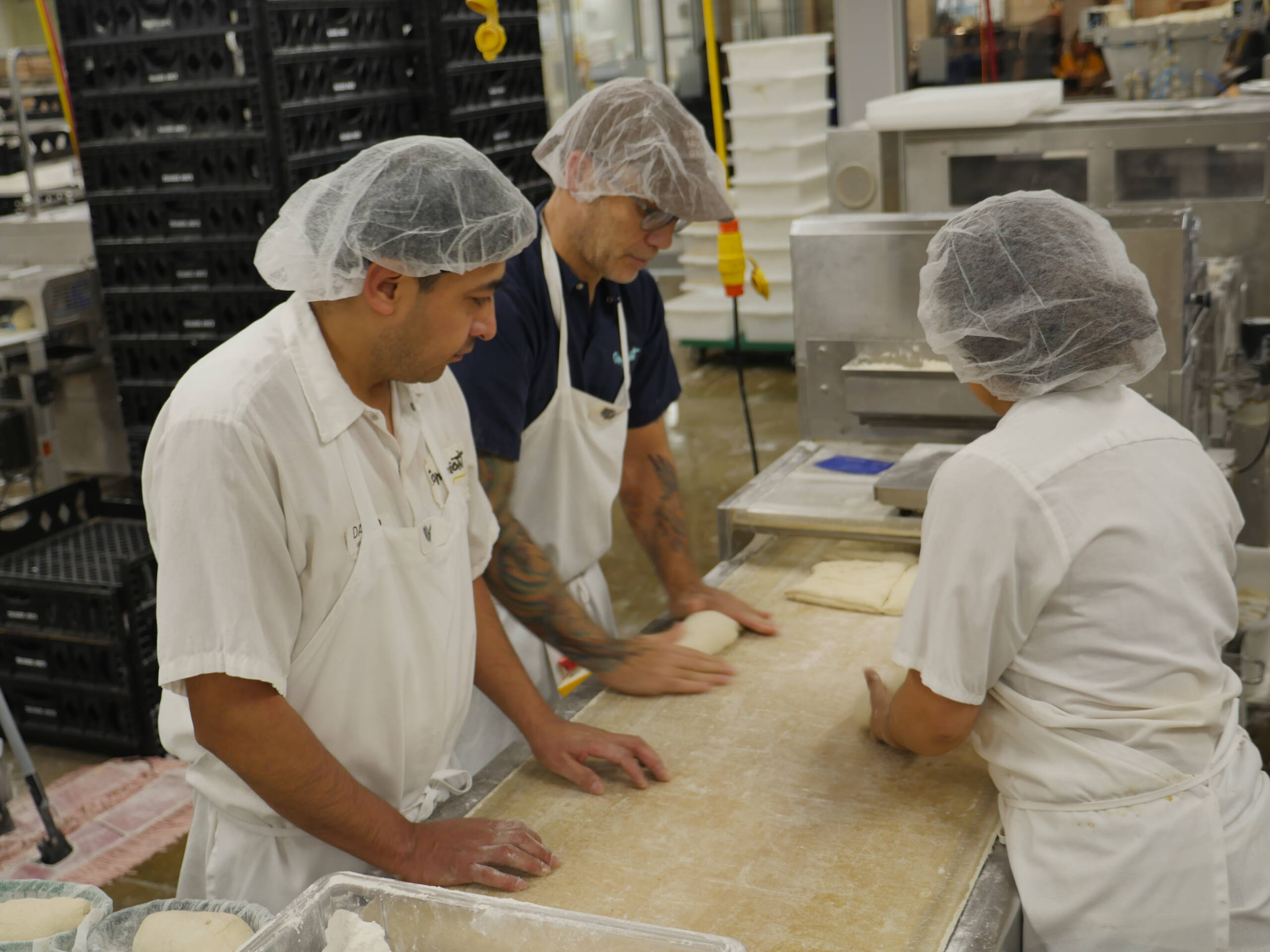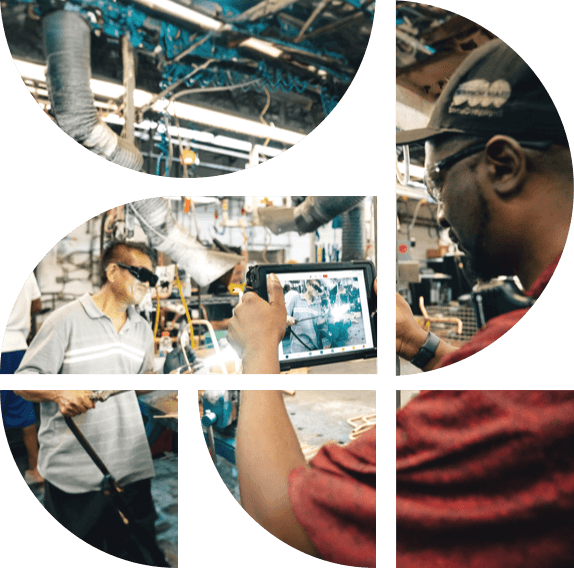Unlock the Secrets to Increased Productivity with Redzone's Newly Released Benchmark Report! Download Today
July 27, 2023

Food safety management ensures the quality and safety of food products throughout the supply chain. By complying with predetermined regulations, businesses in the food industry can reduce the potential of foodborne illness, safeguard their reputation and avoid financial repercussions.
The USDA reports millions of American households struggle with food insecurity, while 30-40% of the country’s food supply goes to waste. By implementing the right food safety management software, food companies can address these challenges.
Read on to learn more about the importance of food safety management and how technology streamlines and automates processes for positive social impact.
Various measures and steps are involved in ensuring the quality and safety of food products. A comprehensive food safety management approach involves:
Here’s a deeper look at common food safety hazards and standards businesses can implement to prevent them.
There are three main types of food safety hazards.
Biological hazards are typically associated with bacteria, viruses and fungi, which consume fresh food from the surface inward and cause food to spoil. While food may exhibit furry patches, spots or wilting, it’s not always easy to tell when food has been affected. Salmonella, E. coli and listeria are common bacterial pathogens that often go undetected but cause sickness and can even be life-threatening.
Chemical hazards generally consist of allergenic substances like peanuts, additives or shellfish in food. These products can cause severe reactions in individuals, so it’s crucial for manufacturers to implement strict contamination controls and ensure products are labeled correctly.
Physical hazards result when non-food material such as glass, metal or plastic accidentally end up in a product. These foreign objects can cause choking, dental problems and severe internal injuries if consumed, so frequent inspections and proper equipment handling are necessary.
Companies can prevent and minimize the possibility of these foodborne hazards by adhering to government standards.
HACCP and ISO 22000 are widely recognized standards that serve as guidelines for effectively implementing food safety management systems.
HAACP
According to the FDA, Hazard Analysis and Critical Point Control is an “effective and rational means of assuring food safety from harvest to consumption.” This systematic approach contains seven principles to identify, evaluate and control food safety hazards. From conducting a hazard analysis to establishing documentation procedures, this science-based framework enhances food safety across the country.
ISO 22000
The International Organization for Standardization combats the consequences of unsafe food by helping “organizations identify and control food safety hazards.” ISO encompasses HACCP principles but is more comprehensive in scope as it provides standards and reassurance across the entire global food supply chain — helping “products cross borders and bringing people food they can trust.”
Food safety management is a continuous process that requires ongoing evaluation and optimization to meet the ever-changing demands and challenges in the food industry.
By implementing a comprehensive food management system, businesses can prevent safety hazards, combat challenges along the supply chain, save money and confidently adhere to industry regulations.
Leveraging digitalization into your food safety management plan brings significant benefits like increased overall efficiency, ensured regulatory compliance and transparency across the food supply chain.
Real-time data collection and analysis have revolutionized businesses’ ability to adhere to food safety measures. Manufacturers can now use smart sensors to monitor critical parameters like temperature, pressure and humidity to ensure products are stored and transported in the right conditions. They can also evaluate energy consumption, check in on product and service performance and much more.
This data is key in optimizing production for minimized risk of contamination, reduced waste and enhanced productivity. Furthermore, with the right connected workforce software, businesses can easily share data, facilitate seamless communication and promote collaboration among all necessary parties – from factory workers to stakeholders – along the supply chain.
When deciding which food safety system to implement, there are many important factors to consider. We’ve got you covered with a detailed list of ten essential features for effective food safety management software.
QAD Redzone is the #1 connected workforce solution for food manufacturers, big and small. QAD Redzone uses real-time, social mobile communication and leverages crucial food safety management systems to connect employees and streamline processes along the food supply chain.
QAD Redzone increases productivity for food manufacturers by 22% by equipping them with the tools they need to safely produce and provide food to consumers.
This is largely due to the software’s ability to unite team members by keeping them informed and making it easy to communicate. Automated reports and data analysis enable employees to recognize potential food hazards, ensure they are complying with regulations and identify room for improvement along the supply chain.
Furthermore, QAD Redzone also serves as a reliable training resource and helps supervisors track crucial food safety documentation regarding best practices, compliance and supplier management. With the tools they need to foster collaboration and manage food safety concerns, manufacturers produce more in less time, reduce waste and increase employee satisfaction across the board.
When it comes to effective food safety management, compliance is of the utmost importance. QAD Redzone helps food manufacturers combat increasing safety concerns by helping them adhere to HACCP principles, safety regulations and internal management systems.
Statistical Process Control (SPC), configurable QAD Redzone checklists and audit management tools make the compliance process manageable and adaptable to meet changing customer specifications.
By providing food manufacturers with real-time updates and easy traceability, QAD Redzone helps identify potential concerns and minimizes the occurrence of food hazards. From operator equipment care to maintenance collaboration, quality control and inevitable breakdowns, teams rely on QAD Redzone to quickly recognize and resolve issues.
QAD Redzone produces real results. Check out this video to see how snack manufacturers benefit from using QAD Redzone.
Food safety management is key to protecting consumer health and ensuring processes along the food supply chain run smoothly. The most effective way for companies to maintain high standards is with software that equips your team with the tools they need to comply with regulations, foresee potential risks, track food along the supply chain and quickly adjust to changes in demand.
QAD Redzone is a comprehensive solution that helps companies manage food safety, increase productivity and keep employees engaged and satisfied. If you’re interested in streamlining your food safety management process for the well-being of your customers and your business, learn more about how QAD Redzone can help.
Twice the Frontline Engagement: Priceless A spring in the step, a smil...

Contact us and let's begin empowering your frontline and growing your bottomline.
